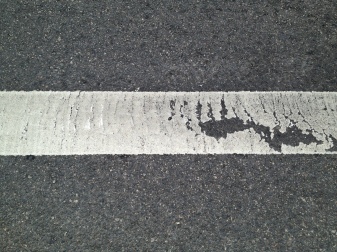(note: because this is one of the most important concepts in the cultural anthropology of Hollywood, the topic gets a two-parter. This is part one).
Outside of the entertainment industry, people use a number of divisions when they talk about Hollywood: A-list and B-list, movies vs. TV, broadcast vs. cable. But when you’re working in the industry, the most important division may be Above the Line and Below the Line.
What does it mean? The term originated with a literal line on the paper of studio budget projections; in general, above the line were fixed costs (i.e. people who got paid no matter if the movie ever finished production) and below the line were flexible costs (i.e. if you stopped filming at some point, you didn’t need these people). But that’s the origin, not really what the terms mean today.
The problem is, this is one of those situations where the distinction is both generally agreed upon and maddeningly vague. What that means is that if you name a specific position on a film or TV production, it’s generally agreed upon whether that person is Above or Below the line. For example, a writer? Above the line. Gaffer? Below the line. The fuzziness enters the picture because it’s far less clear what, in a cultural sense, the distinction means. Is it a class difference? A creative one? A difference in the power structure?
Before we get into all that, and for those unfamiliar with the specifics, here’s a partial list of where certain members of a production fit:
Above the Line: Below the line:
Producer Director of Photography
Director Gaffer
Writer Key Grip
Actor Costume Designer
Production Designer
Editor
So who belongs in each group is fairly well-established, generally speaking.* But as anthropologists, it’s important to look a little deeper: what, in a cultural sense, does the distinction actually mean?
You hear a lot of different ideas about this from people involved in different parts of the industry. Probably the most generally accepted distinction is that above the line is “creative” staff and below the line is “technical” staff. But there are a lot of holes in that: directors (good ones, anyway), have a strong grasp of the technical aspects of the production process. And a lot of below the line positions – production designers, for example – are creative people who can have a lot of impact on the final product. And rightly or wrongly, not many people think of a producer as creative.
Another perspective that is sometimes heard is exemplified in J.R. Helton’s book Below the Line**: the line is “the demarcation where the real money and power starts and stops.” This too is pretty simplistic, though – some of the people who are above the line don’t really seem to have a ton of power (ask a writer), and some who are below can wield considerable influence over a production.
Other distinctions that I’ve heard include: 1) Above is “creative” people, or who have financial control of the project, 2) Above is people who get residuals, 3) Below is production and postproduction crew, 4) Below is people who physically produce the project, 5) Above the line is decision-makers, 6) Above is people you hire before shooting, Below is people you hire during or after. All of these seem to have elements of truth in them, but none of them really captures the entirety of the cultural reality.

Unbeknownst to most people, “the Line” referenced in the terms Above and Below the Line is this particular line in the street at La Cienega and Wilshire Blvd. (not really, of course).
One of the more interesting observations is has to do with labor relations (and how often do you hear that sentence, really?); specifically, the organization of unions for the workers involved. The distinction is this: above-the-line positions almost all have their own unions – actors have SAG, writers the WGA, directors the DGA. But below the line workers are, in a general sense, bundled together with one larger union: the International Alliance of Theatrical Stage Employees, or IATSE. Now, the IATSE has specific divisions for each position (like Local 839 for Animators, and Local 44 for props craftpeople, etc.), but still, it says something about the divisions that abovers each get their own union, while belowers have to share.***
There’s much more to discuss, but we’ve reached the end of what I consider an acceptable length for a blog posting, so in part two we’ll see a more anthropological perspective, what people have worked both above and below the line have to say about it. Also, how the economic needs of below the line workers bring together the LA Mayor and Hellboy Ron Perlman.
— Scott Frank
*Nowadays, one of the current problems is that there are some relatively new positions that aren’t yet clearly in one place or the other, or it hasn’t been determined yet – like if you’ve got a social media manager, are they above or below?
** This mention is not to in any way endorse Helton’s book, which is supposedly a “tell-all” but really seems more a chance for him to vent some bitterness over perceived slights from years of working below the line.
*** Not all below the line employees are in IATSE. There are some who are members of the Teamsters Local 399. But in keeping with the main thrust of the argument, they are still members of a larger union, they do not (unlike above the line folks) have one of their own.
